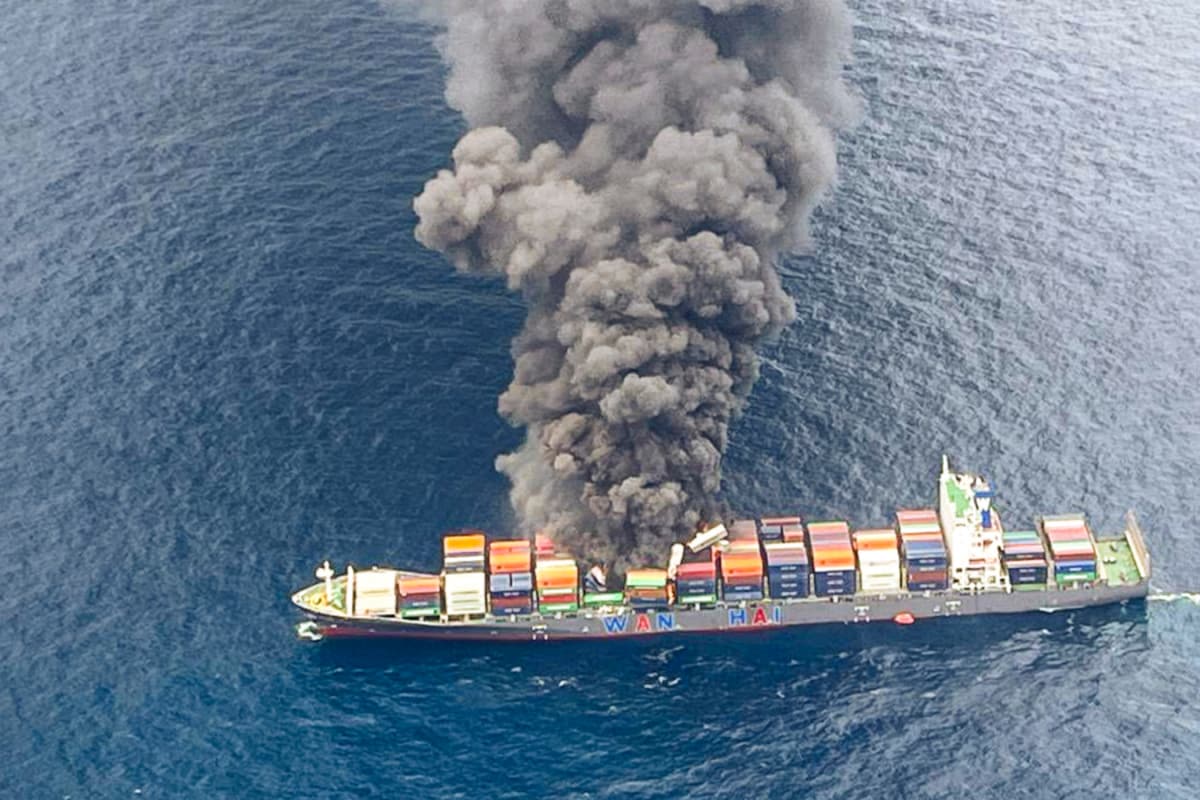

A major fire broke out aboard the Singapore-flagged cargo vessel, Wan Hai 503, approximately 44 nautical miles off the coast of Kerala, India, sparking serious concerns about potential environmental hazards and the safety of the crew. The incident occurred on Monday morning, and the Indian Navy and Coast Guard swiftly responded, rescuing 18 of the 22 crew members. However, four remain missing, raising worries about their well-being amidst the ongoing blaze.
The vessel, en route from Colombo, Sri Lanka, to Nhava Sheva Port in Mumbai, was reportedly carrying 157 containers of hazardous chemicals. These include approximately 240 tonnes of diesel, alongside other dangerous substances like alcohol, pesticides, and naphthalene. Authorities fear that the fire, if it spreads further or triggers an explosion, could have devastating consequences for the surrounding marine ecosystem and nearby coastal communities. Public warnings have been issued to residents in vulnerable coastal areas.
Reports indicate that the fire originated at the rear of the ship and has now spread to the front sections. The blaze is dangerously close to the fuel storage area, increasing the risk of a potential explosion. The extreme heat onboard has severely hampered firefighting efforts, preventing personnel from safely accessing the ship. The vessel is also at risk of tilting due to the structural damage caused by the continuous fire.
Three Coast Guard ships have been deployed to suppress the fire, and while they have managed to somewhat reduce its intensity, the flames continue to burn. Two additional tugboats and salvage experts are en route to provide further assistance. The ship has begun to drift southward, complicating containment and salvage operations. The Coast Guard ship Samarth, carrying a salvage master, is en route to coordinate recovery efforts and mitigate technical risks.
The Directorate General of Shipping has categorized the cargo as dangerous goods and has handed over the cargo manifest to the Kerala government for further preventive action. The Kerala State Disaster Management Authority is expected to release cargo details soon. The manifest reveals a highly hazardous mix of industrial chemicals, with several substances posing grave risks to human health and the marine environment. Among the dangerous goods is Butyl Acrylate Monomer, a volatile and highly flammable liquid, and Tetrahydrofuran (THF), a dangerous solvent known for its explosiveness.
This is the second maritime emergency to strike Kerala's waters in as many weeks, raising concerns about the safety and environmental impact of shipping activities along India's coastline. Environmental groups have drawn comparisons to the X-Press Pearl disaster off the coast of Sri Lanka in 2021, where a chemical fire at sea led to prolonged ecological damage.
The incident has prompted an emergency meeting convened by the Ministry of Ports, Shipping, and Waterways. Negotiations are ongoing with the ship's operating company to manage the crisis and prevent further damage. Authorities have advised ships in the area to maintain a safe distance from the burning vessel.
As rescue and recovery efforts continue, the focus remains on containing the fire, preventing an explosion, and minimizing the potential environmental damage. The incident serves as a stark reminder of the risks associated with transporting hazardous materials by sea and the urgent need for stringent safety measures and regulatory oversight.